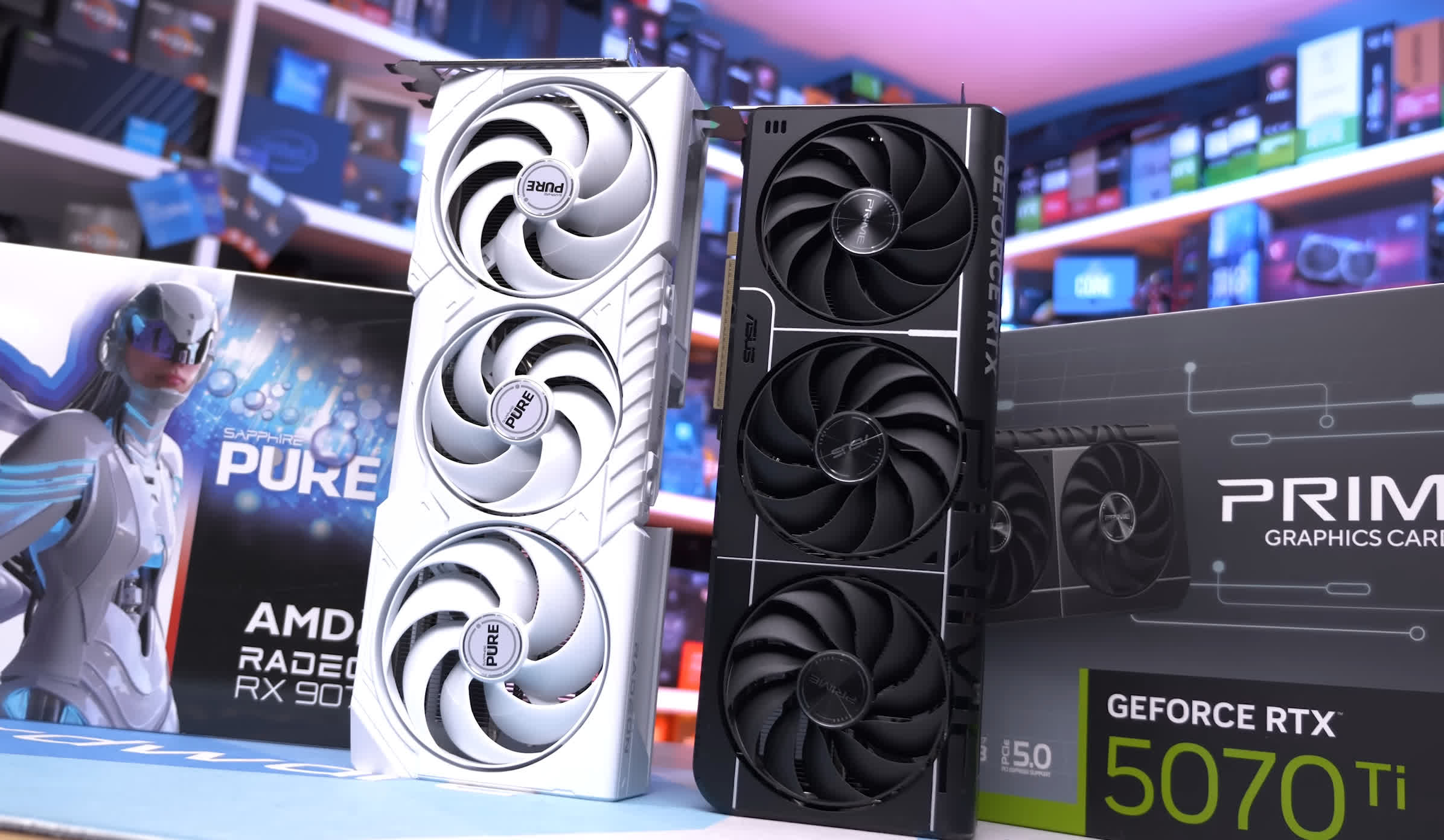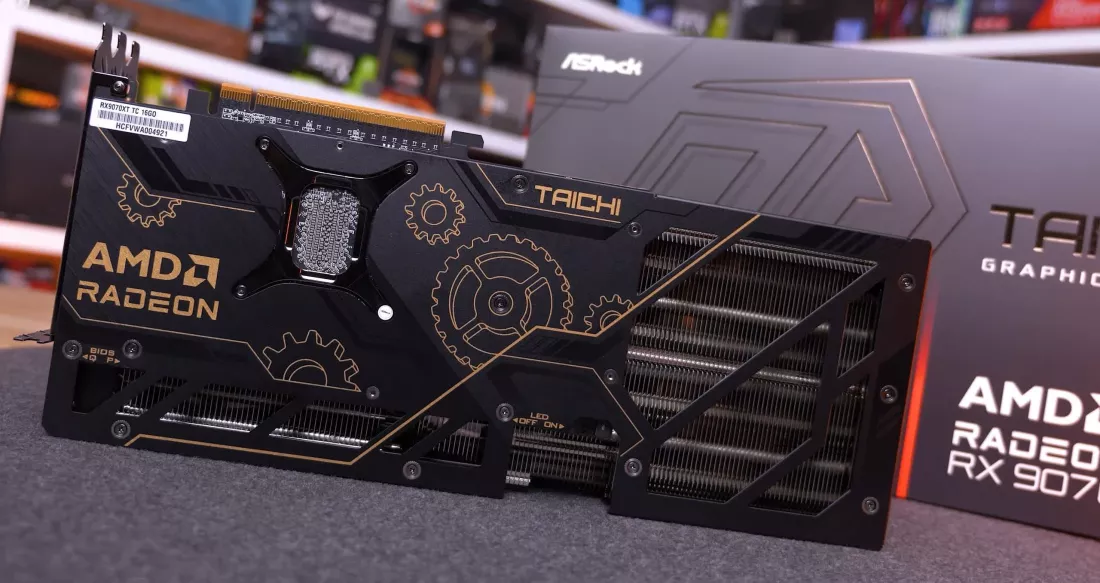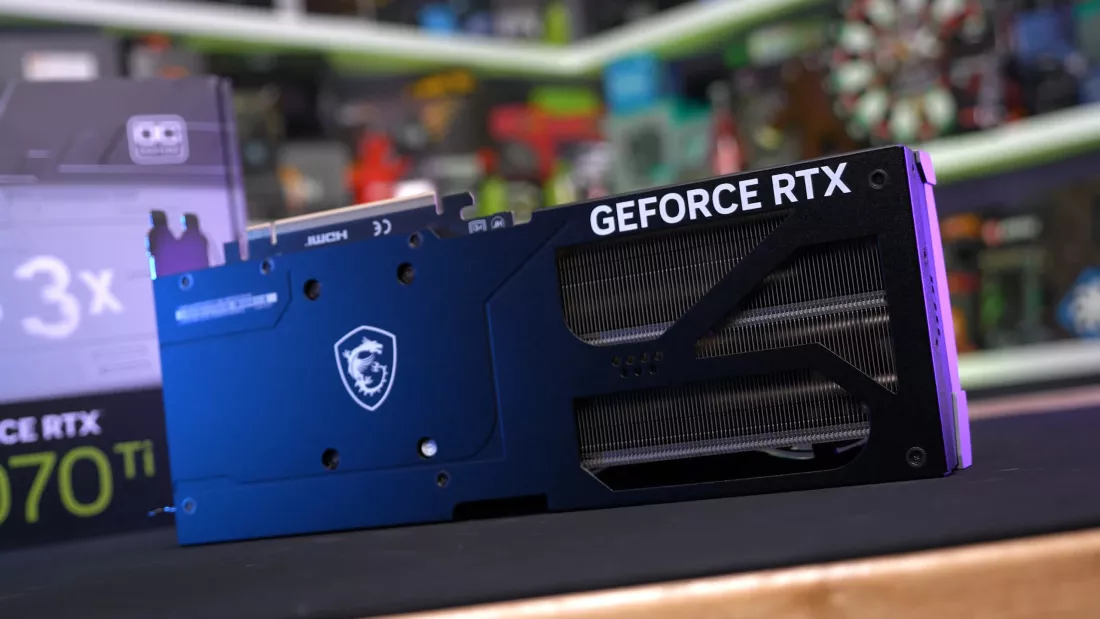
With every new generation of graphics cards, PC gamers and enthusiasts eagerly anticipate the battle between Nvidia and AMD. The Nvidia GeForce RTX 5070 Ti and AMD Radeon RX 9070 XT are two high-performance GPUs designed for gaming, content creation, and AI-powered workloads. But which one is better? In this detailed comparison, we will analyze their specifications, performance, features, and value for money to help you make an informed decision.
Why Compare the RTX 5070 Ti to the RX 9070 XT?
While a competitive market is great for consumers, we're more interested in which company is offering the better value product. For this comparison, we're taking a closer look at the RX 9070 XT and the RTX 5070 Ti.
You could argue – and some surely will – that the Radeon 9070 XT is priced closer to the RTX 5070 than the 5070 Ti, and that's true based on MSRP. However, since we don't recommend purchasing the RTX 5070, there's little point in making that comparison, at least not for our initial comparison.
We may include the RTX 5070 in this data set in the future, but we're currently far more interested in the 5070 Ti vs. 9070 XT match-up – and we suspect many of you are, too. As a side note, we'll continue providing periodic GPU pricing updates, like the we released last week, so be sure to cross-reference this data with future pricing trends.
Specifications Comparison
• GeForce RTX 5070 Ti
The GeForce RTX 5070 Ti is an enthusiast-class graphics card by NVIDIA, launched on February 20th, 2025. Built on the 5 nm process, and based on the GB203 graphics processor, in its GB203-300-A1 variant, the card supports DirectX 12 Ultimate. This ensures that all modern games will run on GeForce RTX 5070 Ti. Additionally, the DirectX 12 Ultimate capability guarantees support for hardware-raytracing, variable-rate shading and more, in upcoming video games. The GB203 graphics processor is a large chip with a die area of 378 mm² and 45,600 million transistors. Unlike the fully unlocked GeForce RTX 5080, which uses the same GPU but has all 10752 shaders enabled, NVIDIA has disabled some shading units on the GeForce RTX 5070 Ti to reach the product's target shader count. It features 8960 shading units, 280 texture mapping units, and 96 ROPs. Also included are 280 tensor cores which help improve the speed of machine learning applications. The card also has 70 raytracing acceleration cores. NVIDIA has paired 16 GB GDDR7 memory with the GeForce RTX 5070 Ti, which are connected using a 256-bit memory interface. The GPU is operating at a frequency of 2295 MHz, which can be boosted up to 2452 MHz, memory is running at 1750 MHz (28 Gbps effective).
Being a dual-slot card, the NVIDIA GeForce RTX 5070 Ti draws power from 1x 16-pin power connector, with power draw rated at 300 W maximum. Display outputs include: 1x HDMI 2.1b, 3x DisplayPort 2.1b. GeForce RTX 5070 Ti is connected to the rest of the system using a PCI-Express 5.0 x16 interface. The card's dimensions are 304 mm x 137 mm x 48 mm, and it features a dual-slot cooling solution. Its price at launch was 749 US Dollars.
• Radeon RX 9070 XT
The Radeon RX 9070 XT is a high-end graphics card by AMD, launched on March 6th, 2025. Built on the 5 nm process, and based on the Navi 48 graphics processor, in its Navi 48 XTX variant, the card supports DirectX 12 Ultimate. This ensures that all modern games will run on Radeon RX 9070 XT. Additionally, the DirectX 12 Ultimate capability guarantees support for hardware-raytracing, variable-rate shading and more, in upcoming video games. The Navi 48 graphics processor is a large chip with a die area of 357 mm² and 53,900 million transistors. It features 4096 shading units, 256 texture mapping units, and 128 ROPs. Also included are 128 tensor cores which help improve the speed of machine learning applications. The card also has 64 raytracing acceleration cores. AMD has paired 16 GB GDDR6 memory with the Radeon RX 9070 XT, which are connected using a 256-bit memory interface. The GPU is operating at a frequency of 1660 MHz, which can be boosted up to 2970 MHz, memory is running at 2518 MHz (20.1 Gbps effective).
Being a dual-slot card, the AMD Radeon RX 9070 XT draws power from 2x 8-pin power connectors, with power draw rated at 304 W maximum. Display outputs include: 1x HDMI 2.1b, 3x DisplayPort 2.1a. Radeon RX 9070 XT is connected to the rest of the system using a PCI-Express 5.0 x16 interface. Its price at launch was 599 US Dollars.
Let's start by comparing the raw specs of these two powerful GPUs:
| Specification | Nvidia GeForce RTX 5070 Ti | AMD Radeon RX 9070 XT |
|---|---|---|
| Architecture | Ada Lovelace Refresh | RDNA 4 |
| CUDA Cores / SPs | 8,192 CUDA Cores | 7,680 Stream Processors |
| VRAM | 16GB GDDR7 | 16GB GDDR7 |
| Memory Bus | 256-bit | 256-bit |
| Ray Tracing Cores | 64 RT Cores | 64 Ray Accelerators |
| AI Cores | 256 Tensor Cores | AI Matrix Accelerators |
| Base Clock | 2.3 GHz | 2.2 GHz |
| Boost Clock | 2.8 GHz | 2.7 GHz |
| TDP (Power Draw) | 285W | 300W |
| MSRP | $699 | $679 |
Performance Benchmarks

Performance is a crucial factor when choosing a GPU. Below, we analyze FPS results in popular games and productivity applications at 4K, 1440p, and 1080p resolutions.
• Gaming Performance
| Game (Ultra Settings) | RTX 5070 Ti (4K) | RX 9070 XT (4K) | RTX 5070 Ti (1440p) | RX 9070 XT (1440p) | RTX 5070 Ti (1080p) | RX 9070 XT (1080p) |
| Cyberpunk 2077 | 75 FPS | 72 FPS | 140 FPS | 135 FPS | 180 FPS | 175 FPS |
| Call of Duty MW3 | 85 FPS | 83 FPS | 155 FPS | 150 FPS | 210 FPS | 200 FPS |
| Baldur's Gate 3 | 90 FPS | 88 FPS | 165 FPS | 160 FPS | 230 FPS | 220 FPS |
| Starfield | 78 FPS | 80 FPS | 145 FPS | 142 FPS | 200 FPS | 190 FPS |
In gaming, the Nvidia GeForce RTX 5070 Ti has a slight edge in ray tracing performance, thanks to better Nvidia drivers and software optimizations through Nvidia GeForce Experience and Nvidia Control Panel. However, the AMD Radeon RX 9070 XT competes closely and may offer better raw rasterization performance in certain titles.
• Productivity & AI Workloads
For content creators and AI users, Nvidia's Tensor Cores play a key role. Software like Blender, Adobe Premiere Pro, and AI-based applications run more efficiently with Nvidia GeForce RTX GPUs due to superior GeForce Experience optimizations. However, AMD's AI Matrix Accelerators are improving performance in select workloads.
| Software | RTX 5070 Ti (Time in Secs) | RX 9070 XT (Time in Secs) |
| Blender BMW Render | 55 sec | 65 sec |
| Adobe Premiere Pro 4K Export | 90 sec | 100 sec |
| Stable Diffusion AI Image Gen | 30 sec | 35 sec |
Features & Software Support
1. Nvidia's Advantages:
• GeForce Experience: Automatic driver updates and game optimizations.
• Nvidia DLSS 3.0: AI-powered upscaling and frame generation for improved FPS.
• Nvidia Reflex: Low latency optimizations for competitive gaming.
• GeForce Now: Cloud gaming service for playing games remotely.
• Better Ray Tracing Performance: Thanks to dedicated RT Cores.
2. AMD’s Advantages:
• FSR 3.0: Open-source upscaling, working on all GPUs.
• More VRAM Efficiency: Better memory management in some scenarios.
• Lower Price Point: Generally better performance-per-dollar ratio.
Value for Money

At a similar price range, both GPUs offer strong performance. The RTX 5070 Ti is slightly better for ray tracing and AI tasks, while the RX 9070 XT provides strong rasterization performance at a potentially lower price.
If you prioritize ray tracing, AI workloads, and Nvidia ecosystem features (GeForce Now, GeForce Experience, Nvidia Control Panel), go for the RTX 5070 Ti.
If you want raw rasterization performance and better price-to-performance ratio, the RX 9070 XT is an excellent choice.
FAQ
1. What are the main differences between the RTX 5070 Ti and RX 9070 XT?
The RTX 5070 Ti excels in ray tracing, AI performance, and Nvidia's software features, while the RX 9070 XT offers great rasterization performance at a slightly lower price.
2. Which GPU is better for 4K gaming?
Both perform well in 4K, but the RTX 5070 Ti has better DLSS 3.0 support, making it the preferred choice for high-fidelity gaming.
3. Does the RTX 5070 Ti support GeForce Now?
Yes, GeForce Now is a cloud gaming service from Nvidia that supports RTX 5070 Ti and other Nvidia GPUs.
4. Which GPU has better driver support?
Nvidia drivers are generally considered more stable and frequently updated than AMD's drivers.
5. Will the RTX 5070 Ti be compatible with Nvidia Control Panel?
Yes, Nvidia Control Panel allows users to tweak GPU settings and is fully compatible with the RTX 5070 Ti.
6. How does the RTX 5070 Ti compare to other Nvidia GPUs like RTX 4090, RTX 5080, and RTX 5090?
• RTX 4090: Significantly more powerful but much more expensive.
• RTX 5080: Expected to be a higher-tier option in the RTX 50 series.
• RTX 5090: The upcoming flagship with top-tier performance.
Final Verdict
Across a wide range of games, the Radeon RX 9070 XT is, on average, about 5% slower than the GeForce RTX 5070 Ti. So, generally speaking, performance is quite close. Based on MSRP – $600 for the 9070 XT and $750 for the 5070 Ti – the Radeon GPU is priced 20% lower, offering around 15% better value.
Looking at recent retail pricing, we found the 9070 XT typically sells for $750, while the RTX 5070 Ti goes for around $900, making the Radeon GPU 17% cheaper and approximately 12% better value. Realistically, you'll likely purchase whichever model is available at a reasonable price, and that's more likely to be a Radeon GPU, as the 9070 XT is far more readily available than the 5070 Ti. But in a world where both would be readily available, we believe the Radeon 9070 XT needs to be at least 15% cheaper to earn our recommendation over the 5070 Ti. At a 10% difference, the choice could go either way. And if the price gap is less than 10%, then the RTX 5070 Ti makes more sense, thanks to DLSS 4, superior ray tracing performance, and generally being a bit faster overall.
Taking everything into account, we feel the Radeon RX 9070 XT is quite evenly matched with the RTX 5070 Ti. That's why we recommend a 15% discount as the tipping point for choosing Radeon. And of course, this is a general recommendation – if you primarily play titles like ACC, Hunt Showdown, Gears 5, or GTA V, the GeForce GPU will likely deliver more consistent performance, barring future driver improvements from AMD, so as usual try to research performance for the games you play the most.
• Choose Nvidia GeForce RTX 5070 Ti for ray tracing, AI workloads, and Nvidia-exclusive features like GeForce Now and Nvidia Control Panel.
• Choose AMD Radeon RX 9070 XT for strong rasterization, price-to-performance efficiency, and more VRAM optimization.
Both GPUs are excellent, but your choice depends on your priorities. Whether you're a hardcore gamer, a content creator, or an AI developer, either option will serve you well!
Written by Jack Zhang from AIChipLink.
AIChipLink, one of the fastest-growing global independent electronic component distributors in the world, offers millions of products from thousands of manufacturers, and many of our in-stock parts is available to ship same day.
We mainly source and distribute integrated circuit (IC) products of brands such as Broadcom, Microchip, Texas Instruments, Infineon, NXP, Analog Devices, Qualcomm, Intel, etc., which are widely used in communication & network, telecom, industrial control, new energy and automotive electronics.
Empowered by AI, Linked to the Future. Get started on AIChipLink.com and submit your RFQ online today!

.png&w=256&q=75)










